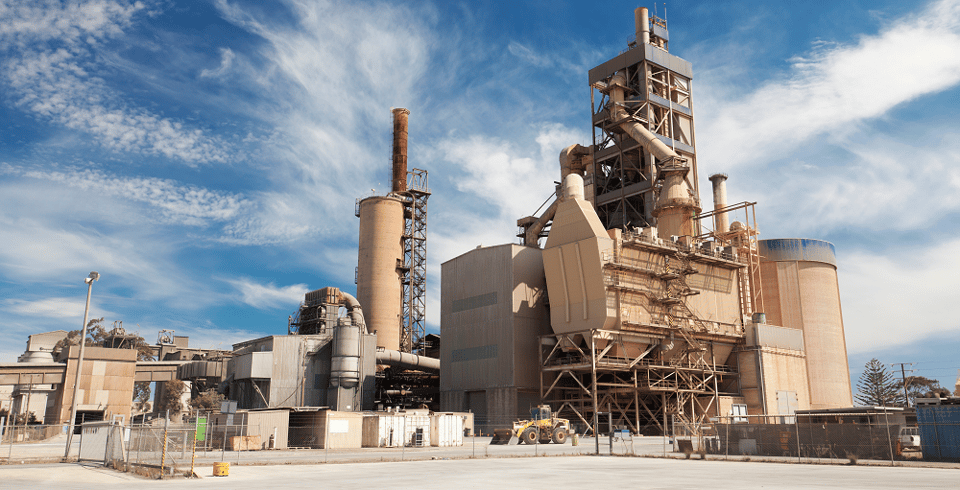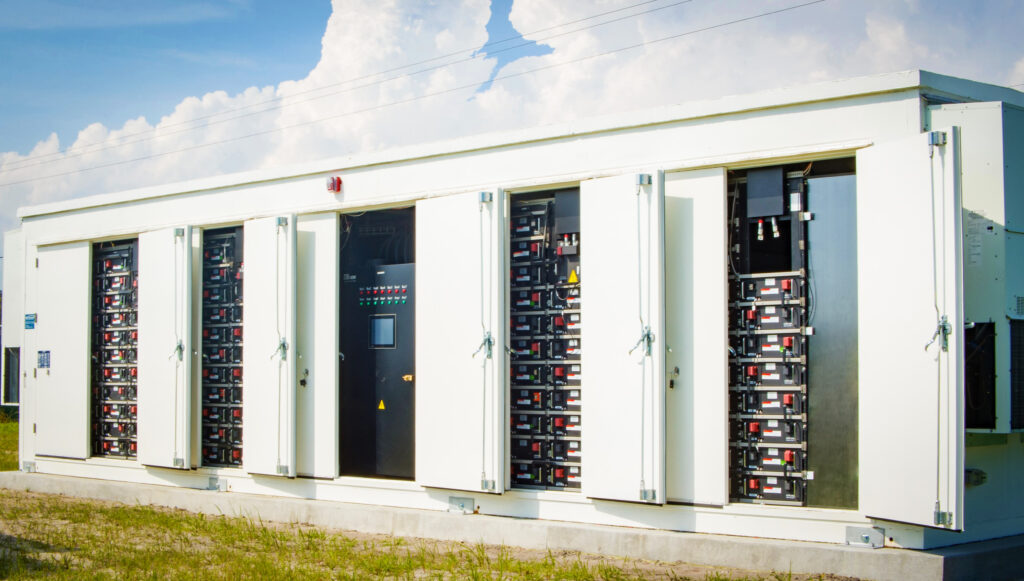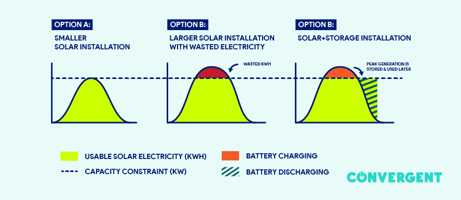A Solid Idea: Battery Energy Storage Systems for Cement Production Facilities

Why Battery Storage Makes “Cents” for Cement Production Facilities
On-site renewable energy can play a key role in the cement industry’s plans to support carbon-neutral concrete by 2050 while mitigating high fluctuations in energy costs.
The increasing priority of decarbonization and corporate ESG (environmental, social, and governance) performance creates a unique opportunity for the cement industry to utilize on-site renewable energy to lower operating costs, fight climate change, improve resiliency, and drive corporate sustainability initiatives.
On-site battery energy storage systems, with or without solar PV, are an effective way to reduce cement facilities’ electricity costs while also reducing carbon footprints. A battery storage system can shave peak demand charges and provide energy arbitrage by charging during low-cost periods of the day when renewables are plentiful. When paired with solar PV (known as solar-plus-storage), industrial-scale batteries can discharge solar energy whether or not the sun is shining. Deploying onsite battery solutions may also allow the early retirement of increasingly more difficult-to-operate diesel gen-sets.
As the cement industry looks for GHG-free ways to dramatically lower energy bills, on-site renewables provide a win-win opportunity. This “win-win” is one of the reasons people are calling this “The Battery Decade,” and the U.S. energy storage market is projected to grow to more than $100 billion over the next 10 years.
Energy Usage in Cement Production: The Motivation to Reduce Costs and Carbon
Cement producers have intensive power requirements, with electrical loads ranging from 20 to 40 megawatts (MW). The cement industry produces about 7% of the world’s greenhouse gas emissions, which is why it is so focused on achieving carbon neutrality by 2050.

In addition to carbon emissions related to high electrical usage, processes inherent to cement manufacturing make the industry ripe for decarbonization. First, cement production contributes to CO2 emissions through the calcination process of limestone, whereby limestone, chalk, clay, and other raw materials are ground and burned at high temperatures prior to clinkerization. Second, CO2 is emitted through the combustion of fossil fuels– typically coal–in the kilns. Because cement production is highly carbon-intensive, many cement companies have made it a priority to adopt sustainable practices.
The large amount of power required for cement production also poses another concern to cement producers: cost. The costs include energy charges and demand charges. Energy charges are based on the consumption of energy in kilowatt-hours (kWh) and prices can change depending on the time of the day, the day of the week, and the season. Demand charges are related to the rate of energy usage rather than the amount of energy used; they are calculated based on the maximum amount of power a customer uses at any given time within an interval (typically 15 minutes).
Utilities use demand charges to incentivize commercial and industrial customers to use energy at a steady, predictable rate to prevent shortages in generation and demand capacity. A flat-rate tariff without demand charges can also pose problems related to revenue instability, poor price signals, and subsidization of low-usage customers by high-usage ones. Due to their importance, demand charges typically comprise a significant portion of a customer’s utility bill.
Background on Battery Energy Storage Systems
Energy storage, most often in the form of a battery energy storage system (BESS), is the linchpin of the clean energy transition.
Batteries turn chemical energy into electrical energy and vice versa, enabling utilities and power users to store energy for later use. Batteries are charged from the grid or a power generator and discharged later when energy prices are high, or grid power is unavailable. As the world increasingly looks to renewable resources and away from fossil fuels, energy storage can help bridge this energy transition.

First, battery storage can address the intermit nature of solar and wind power by capturing it upon generation, so renewable power can be used when it is needed and not only when it is generated. Battery storage can also serve the grid by quickly responding to large fluctuations in electrical demand, taking load off the grid and therefore making it more resilient and reliable. In places such as California where blackouts occur during summer months, battery storage can help meet demand during peak times.
Several different battery chemistries exist, and each has its own advantages and disadvantages. The predominant technology globally for grid-scale batteries in recent years is lithium-ion. Other chemistries also include solid-state, sodium-based, and redox flow.
Key characteristics of battery storage systems, regardless of the technology include their rated power capacity, energy storage capacity, and storage duration. Rated power capacity indicates the total instantaneous discharge capability of a battery in kilowatts or megawatts from a fully charged state. Energy storage capacity is the maximum amount of stored energy in kWh or MWh of a battery. Storage duration is the amount of time the battery can discharge at its power capacity before depleting its energy storage capacity. For example, a battery with 1 MW of power capacity and 3 MWh of usable energy capacity will have a storage duration of three hours.
How Energy Storage or Solar-Plus-Storage can Mitigate Volatile Energy Prices
As recently as five years ago, battery storage was not necessarily on the radar of most commercial and industrial companies as a way to manage energy costs. Today, however, battery storage, often paired with solar PV, offers companies a proven way to reduce energy costs and reach sustainability goals at the same time.
As the world increasingly looks to renewable resources and away from fossil fuels, energy storage can help bridge this energy transition. The more renewable energy on the grid, the better—but these resources only produce power when the sun is shining, or the wind is blowing. Battery storage can “firm up” renewable resources, maximizing their value to the grid—and to you.
If your business is considering a battery storage or solar-plus-storage solution to lower your energy bill and hedge against rising energy costs, you are in good company. Businesses like Shell, Ford, and Pilkington (NSG Group) have done just that with a development partner (spoiler alert: that partner is Convergent Energy and Power).
Convergent, a leading developer of energy storage solutions in North America, has been in the energy storage and solar-plus-storage industry since its infancy, more than a decade ago. Throughout that time, we’ve worked closely with businesses to take the hassle out of energy storage by building, owning, and operating systems on their behalf. With battery storage, we’ve lowered our customers energy bills up to 40%. The more you spend on your energy bill, the more you can save with battery storage.
Conclusion: Reducing Costs and Carbon Emissions with Battery Storage
The large amount of power required for cement production drastically exposes the concrete sector to fluctuations in energy prices. On-site renewables can play a strategic role plans to mitigate rising energy costs and hedge against future fluctuations. Further, on-site renewable generation is critical to the cement industry’s goal of producing carbon-neutral concrete by 2050.

Battery storage systems are an ideal technology to deliver significant cost savings to large cement manufacturing facilities through peak demand savings, energy arbitrage, and other potential territory-based value stacks. When combined with solar photovoltaics, storage enhances the value of solar by energy shifting – charging during low-cost periods and discharging during higher-cost periods.
Our tagline is “Powered by Results.” We have delivered millions in savings to our industrial customers while enabling them to access cleaner, more reliable power. This opportunity is a win for all involved, including our planet.
The best part: there’s no capital required from your business. The shared-savings contract Convergent offers means we share in the upside and only make money if our customers do.
If you’re ready to make progress on corporate sustainability targets without impacting operations—and save money doing it—schedule a free, no-obligation introductory call with our team today.


